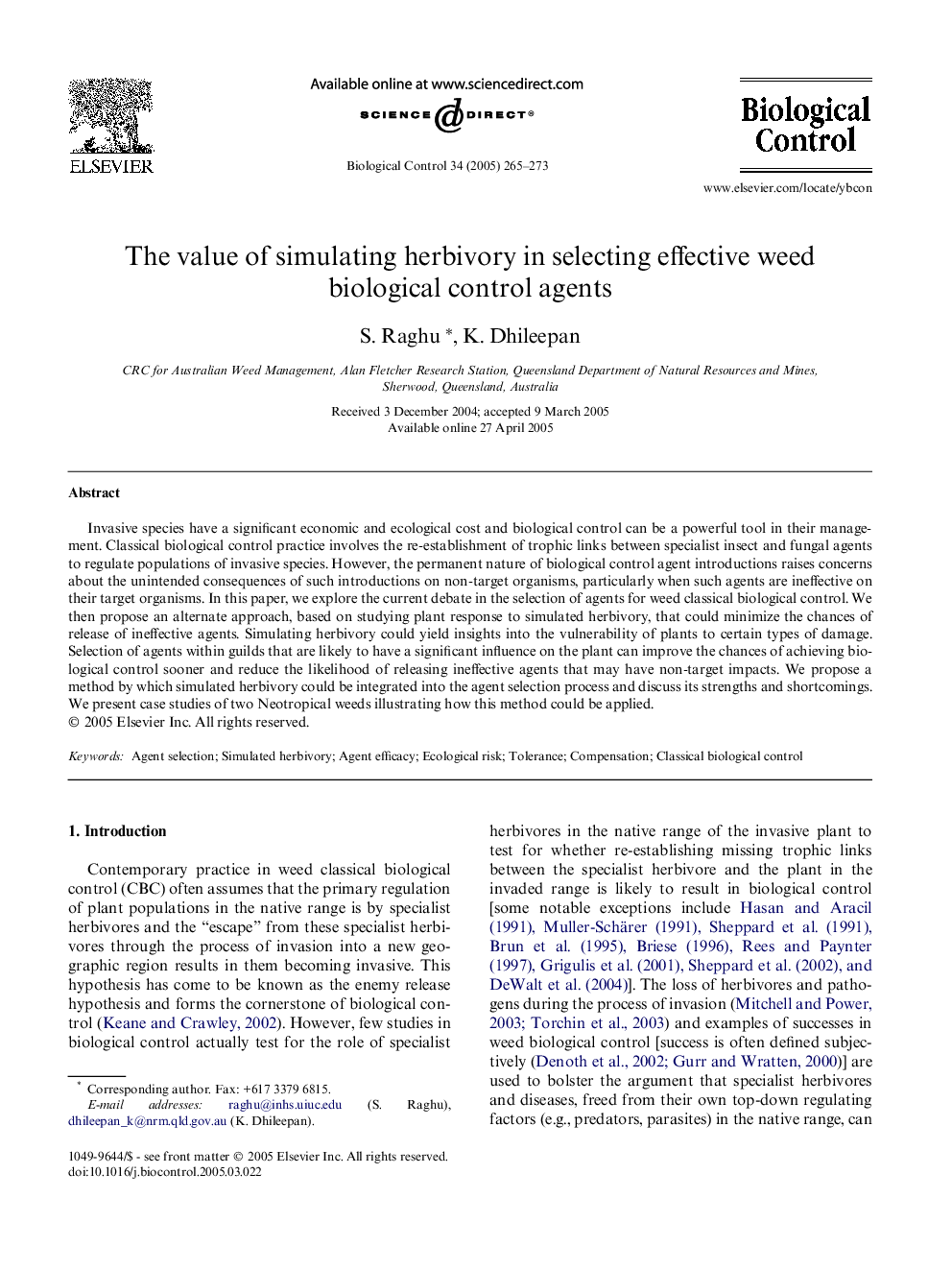| Article ID | Journal | Published Year | Pages | File Type |
|---|---|---|---|---|
| 9471987 | Biological Control | 2005 | 9 Pages |
Abstract
Invasive species have a significant economic and ecological cost and biological control can be a powerful tool in their management. Classical biological control practice involves the re-establishment of trophic links between specialist insect and fungal agents to regulate populations of invasive species. However, the permanent nature of biological control agent introductions raises concerns about the unintended consequences of such introductions on non-target organisms, particularly when such agents are ineffective on their target organisms. In this paper, we explore the current debate in the selection of agents for weed classical biological control. We then propose an alternate approach, based on studying plant response to simulated herbivory, that could minimize the chances of release of ineffective agents. Simulating herbivory could yield insights into the vulnerability of plants to certain types of damage. Selection of agents within guilds that are likely to have a significant influence on the plant can improve the chances of achieving biological control sooner and reduce the likelihood of releasing ineffective agents that may have non-target impacts. We propose a method by which simulated herbivory could be integrated into the agent selection process and discuss its strengths and shortcomings. We present case studies of two Neotropical weeds illustrating how this method could be applied.
Keywords
Related Topics
Life Sciences
Agricultural and Biological Sciences
Agronomy and Crop Science
Authors
S. Raghu, K. Dhileepan,
